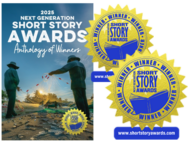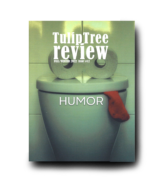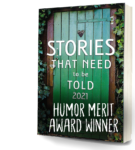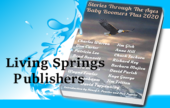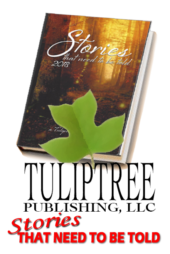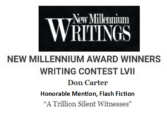Terroir; Between Medoc & A Hard Place.
Chapter Eleven. Part Four.
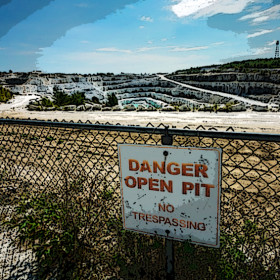 Mineral is one of the terms often used when describing old-world wines. Whether it is perceived as graphite or clay in young red wines from the Medoc or as chalky limestone in Loire Valley whites, minerality often finds its way into wine. I’d like to tell you the romantic tale of how I discovered this important facet of terroir when I was travelling through the vineyards of France, but then I’d be lying.
Mineral is one of the terms often used when describing old-world wines. Whether it is perceived as graphite or clay in young red wines from the Medoc or as chalky limestone in Loire Valley whites, minerality often finds its way into wine. I’d like to tell you the romantic tale of how I discovered this important facet of terroir when I was travelling through the vineyards of France, but then I’d be lying.
I learned about minerality as a trespassing juvenile delinquent in the cornfields west of Chicago. These cornfields were littered with abandoned stone quarries that – once the water table had been breached – filled with crystalline spring water. The resulting oasis was a welcome relief from the oppressive Illinois heat, providing you were willing to ignore the threatening signs and climb a chain link fence.
Read MoreTerroir; From Great Vines Come Great Wines.
Chapter Eleven. Part Three.
Gerald Asher, A Vineyard in My Glass
 There’s an expression among winemakers that says, “95% of every wine is made in the vineyard.” This simply means that despite the best efforts of man to manipulate wine, its quality ultimately depends on the grapes they start with. Unless of course man takes his 5% and really screws things up, in which case he’ll remind us that 95% of the wine is made in the vineyard. And in case you’re wondering, that’s the vineyard where sour grapes come from.
There’s an expression among winemakers that says, “95% of every wine is made in the vineyard.” This simply means that despite the best efforts of man to manipulate wine, its quality ultimately depends on the grapes they start with. Unless of course man takes his 5% and really screws things up, in which case he’ll remind us that 95% of the wine is made in the vineyard. And in case you’re wondering, that’s the vineyard where sour grapes come from.
It Was The Best Of Wines. It Was The Worst Of Wines.
Chapter Eleven. Parts One & Two.
The November 1997 issue of the Wine Spectator rated the Louis Latour 1990 Corton-Charlemagne 98 points … and 88 points.
98 LOUIS LATOUR Corton-Charlemagne 1990
Exotic, wild and savage. A deep, “gonzo-crazy” terroir wine, full-bodied and packed with dried herbs, honey and spicy oak. Almost tannic in structure, it explodes like a small volcano on the palate for an unbelievable experience. Not for the faint of heart though.
88 LOUIS LATOUR Corton-Charlemagne 1990
Mature, with an herbal, slightly leathery accent to the pear and oak flavors. Shows its age via dryness and coarseness on the finish.
In the same issue the 1995 Arrowood Réserve Spéciale received 95 points … and 82 points, and the Rochioli 1995 Allen Vineyard Reserve was awarded 96 points … and 85 points. These dyslexic point spreads were not the result of ADD (Alcohol Drinking Disorder); these Dickensian observations were simply a tale of two critics.
Read MoreMetaphors In Wine Journalism.
Chapter Six, Part Three.
 Are you feeling some trepidation about your ability to accurately evaluate and describe wine? Relax. Wine analysis isn’t black arts or brain surgery … It’s rocket science. Hey, I’m kidding. Describing wine is easy. All you need is a steady stream of euphemisms, metaphors and dialysis treatments.
Are you feeling some trepidation about your ability to accurately evaluate and describe wine? Relax. Wine analysis isn’t black arts or brain surgery … It’s rocket science. Hey, I’m kidding. Describing wine is easy. All you need is a steady stream of euphemisms, metaphors and dialysis treatments.
If you’ve been following these pages you should now be adept at euphemisms and similes so it’s time to let the right brain step up to the plate and take a swing at metaphors. Wine writers use a truckload of metaphors, or maybe it’s a ton of metaphors … no, it’s a sea of … you get the idea, we use lots of metaphors.
Read MoreSimiles In Wine Journalism Are Like ‘Totally Awesome’.
Chapter Six, Part Two.
 Americans often have difficulty with the vocabulary of wine analysis, which is odd as we seem to have no problem talking about our “feelings”. We’ve become so sensitive that I often well up with tears just watching a Hallmark commercial and something really emotional can send me to bed for a week, say something like picking up the check.
Americans often have difficulty with the vocabulary of wine analysis, which is odd as we seem to have no problem talking about our “feelings”. We’ve become so sensitive that I often well up with tears just watching a Hallmark commercial and something really emotional can send me to bed for a week, say something like picking up the check.
When it comes to describing wine our vocabulary is often limited to “I like it” or “I don’t”. The French on the other hand, have no difficulty when it comes to expressing their feelings about wine. Perhaps that’s because the language of wine is much like the language of love; it’s euphemistic, metaphoric, similecious, and pornographic.
Read MoreIn Other Words – Euphemisms In Wine Journalism.
Chapter Six, Part One.
 Once you’ve learned to decipher wine’s elusive qualities you may also need some tips on how to express your observations. In addition to the correlation between the flavors found in wine and the flavors found in your average fruit basket, you’ll want to describe wine’s appearance, texture, weight, oak, and umm … what’s that other one? Oh yeah, arsenic.
Once you’ve learned to decipher wine’s elusive qualities you may also need some tips on how to express your observations. In addition to the correlation between the flavors found in wine and the flavors found in your average fruit basket, you’ll want to describe wine’s appearance, texture, weight, oak, and umm … what’s that other one? Oh yeah, arsenic.
We turn to wine critics for help with these thorny descriptors because they are so much more than mere wine aficionados. That’s right, wine critics are also self-aggrandizing blowhards. No wait! That’s not it! I meant to say they are also writers.
Read MoreThe Umami Tsunami.
Chapter Eight, Part Three.
One + One = Three (The Synergy Of Umami).
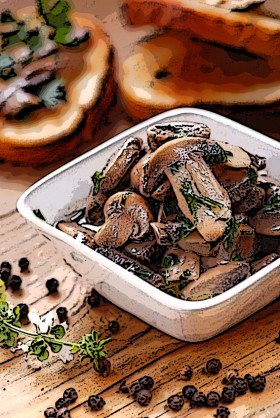 The subtle, savory fifth taste known as umami was first identified by Japanese scientist Kikunae Ikeda in 1907. In researching umami he discovered that it was linked with the amino acid glutamate and his investigations led to the development of monosodium glutamate (MSG) as a flavor enhancer. I could feed you lots of material about the development of umami-rich MSG but you would just be hungry for more in an hour.
The subtle, savory fifth taste known as umami was first identified by Japanese scientist Kikunae Ikeda in 1907. In researching umami he discovered that it was linked with the amino acid glutamate and his investigations led to the development of monosodium glutamate (MSG) as a flavor enhancer. I could feed you lots of material about the development of umami-rich MSG but you would just be hungry for more in an hour.
The umami tsunami began in earnest six years after Ikeda’s discovery when his follower Shintaro Kodama learned that glutamate, when combined with nucleotides, creates a dramatic flavor enhancing synergy. For example, when meat (high in the nucleotide inosinate) is combined with glutamate-rich foods like tomatoes or cheese, a significant umami boost is created. To understand the power of this synergy, think of the flattering outcome when you add cheese to a hamburger or braciola to tomato sauce (or as we say in New Jersey, you put the bruh-johl in the gravy).
Read MoreIn Search Of Umami.
Chapter Eight, Parts One & Two.
Where Have You Been All My Life?
 Sweet, sour, salt, bitter … sweet, sour, salt, bitter. I repeated those words at so many events for so many years that the phrase was like my own personal mantra, rooted in my psyche by daily visits to the Deli Lama. Just imagine my concern when I learned of umami – the existence of a fifth taste was surely going to throw off my mantra rhythm. Sweet, sour, salt, bitter … UMAMI? It has a good beet but you just can’t trance to it.
Sweet, sour, salt, bitter … sweet, sour, salt, bitter. I repeated those words at so many events for so many years that the phrase was like my own personal mantra, rooted in my psyche by daily visits to the Deli Lama. Just imagine my concern when I learned of umami – the existence of a fifth taste was surely going to throw off my mantra rhythm. Sweet, sour, salt, bitter … UMAMI? It has a good beet but you just can’t trance to it.
Not only did this secretive fifth taste exist, it existed right under my nose – where my mouth is conveniently located. I knew if I was ever going to get my mantra groove back I needed to embrace the mystical taste I’d overlooked for so long. I gathered articles and books on the subject and soon learned that describing the taste of umami is like describing the flavor of wine, it’s just so many words on a page. Umami, like wine, must be experienced to be understood.
Read MoreLife Worth Living Starts With Wine Worth Drinking.
I‘ve always been inspired by Eleanor Roosevelt, who once said, “You must do the things you think you cannot do.” I took her advice to heart and I’m happy to report that I’m back at my laptop now that I’ve made bail.
Speaking of bail, last year I reviewed several wines from the Massanois trade tasting and I was able to attend again this year due to a glaring lapse in security. I only tasted the domestic wines this year because those are the wineries I wanted to pester into giving me a job. I’ve been ungainfully employed as a blogger since selling The Wine Seller last year but at least they let me keep the computer, the tax records, and the ulcer.
Read MoreThe Wine Aroma Wheel Goes Round & Round.
Chapter Three, Part Eight.
I‘m writing this blog under protest. I’m protesting the intolerable conditions in this frigid basement office where my breath fogs the screen and I have to sip whiskey to keep my spleen from developing potholes. Luckily this is in keeping with my new diet. I’m on the bourbon diet and I’ve already lost 300,000 brain cells.
It was 12 degrees this morning but at least the Weather Channel reports it’s going to cool down soon. My friend visited from Arizona and when he complained about the cold I said, “Hey, this isn’t so bad. It’s a dry cold.”
The household has finally adjusted to the arctic temperatures. My son has actually pulled his pants up and my wife happily fuels the fireplace with my old articles.
Read More




